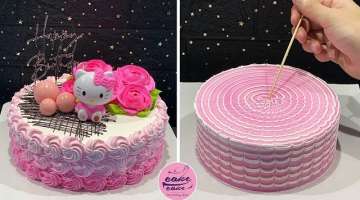8 Things You Need to Know About Adorable White Fairy Tern
These birds are more than just adorable avians with pale feathers, dark black eyes and really cute chicks. They’re connected to Hawaii’s history and culture, and have become icons of adoration for many of the city’s residents and visitors. Below you can learn more about what makes the white fairy tern so special.
- 1 | 8

The white tern (sometimes mistaken called fairy tern) is a widespread species that breeds on tropical islands. While these birds also nest on rocky slopes, cliffs and buildings, they are unique among terns in using branches, a habit famously observed on Bird Island.
- 2 | 8

Although white fairy terns can be found throughout the Northwestern Hawaiian Islands small atolls and uninhabited islands the only main Hawaiian island these birds can be found on is Oahu. And instead of deciding to nest in the calmer, more tropical parts of Oahu, the white fairy tern rests its wings along the busy streets of Honolulu, from Niu Valley to Sand Island.
- 3 | 8

Since the white fairy tern has decided to call Honolulu its home, Mayor Mufi Hannemann designated it as the official bird of the City and County of Honolulu in 2007. There's even a free-to-the-public annual summer festival, the Manu O Ku Festival, which highlights the bird and teaches the community about it through games and interactive workshops.
- 4 | 8

Although the white fairy tern is often called just that, the bird has another name in olelo Hawaii (Hawaiian language), manu-o-Ku, which translates to "the bird of Ku." In Hawaiian mythology, Ku is one of the four great gods and is worshipped as the god of war.
- 5 | 8

Certain individuals love the manu-o-Ku so much that they've started conservation groups, such as the Hui Manu-o-Ku, which describes itself as "a group of dedicated conservationists and citizens who have come together to observe, protect and raise awareness about manu-o-Ku." Another prominent group is Na Hoaloha o ka Manu-o-Ku (The Friends of the White Fairy Tern), where you can find hundreds of photos of the bird on its ever-updated Facebook feed.
- 6 | 8

Although seeing a white fairy tern now may just cause folks to take out their phones and start snapping photos, sighting a manu-o-Ku had a very different meaning for old-time Hawaiian navigators. Traditional seafarers would use the bird's direction of flight–as well as the time of day–to help them navigate toward land, as the white fairy tern will fly out to sea in the morning to feed and then return to land at night.
- 7 | 8

Like seafood? Well, the white fairy tern loves it, and forages in inshore and offshore waters for small fish and squid. The next time you see a manu-o-Ku, try looking closely and you might see it carrying some aquatic prey in its beak. This is because adult white fairy terns will often catch multiple fish or squid to bring to their chicks.
- 8 | 8

Seriously. Look at these little puffballs. After about 45 days, the chick will be old enough to fly, however, it will still stay near its home tree as it expands its range of flight. Here, females often lay a single egg directly onto the bough of a Casuarina tree, typically in a fork or depression. Though the eggs risk being blown or knocked from these precarious sites, they are safe from ground predators, which take many of those laid elsewhere on the island. White terns lay just one egg that requires 30–41 days incubation, so there is a good chance that the nesting attempt will fail; fortunately, they may breed over a 15-year period.



















